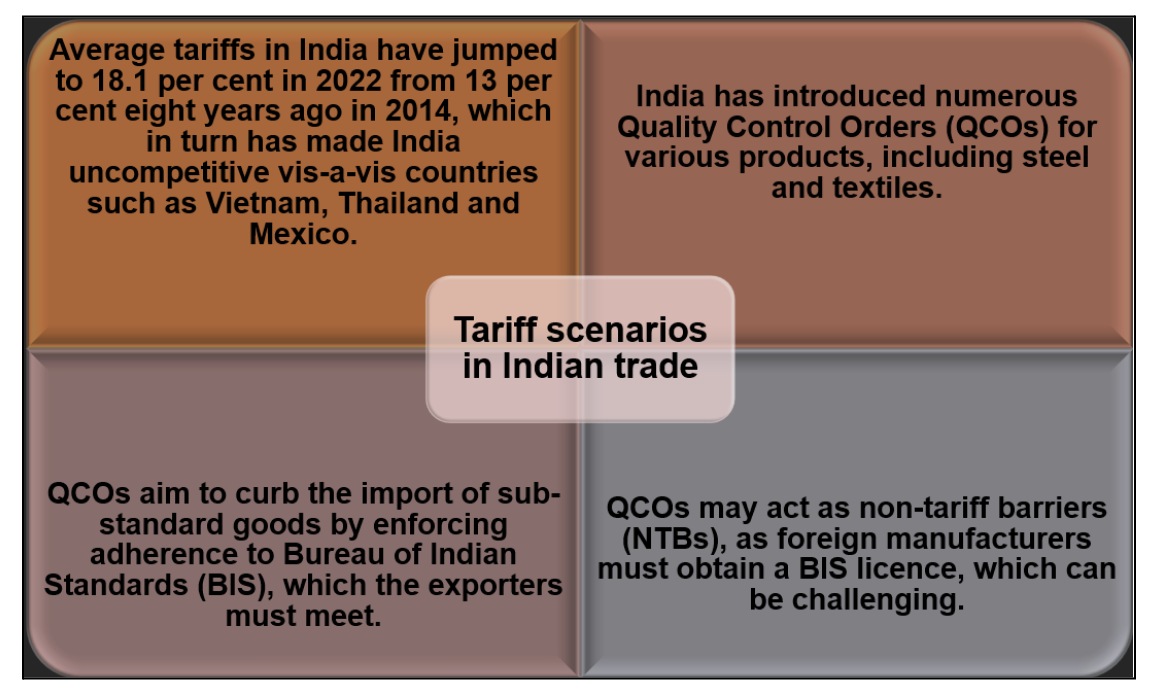News Excerpt:
In his address at the Confederation of Indian Industry’s (CII) Annual Business Summit 2024, NITI Aayog CEO highlighted the need for India to get into global value chains (GVCs) to boost exports and secure supply chains.
Key highlights:
- The CEO advocated for lower tariffs to enable India to become a part of global value chains and the need for fast-tracking legal processes to spur greater private investments in infrastructure.
- It was added that barriers such as Non-Tariff Barriers and Carbon Border Adjustment Mechanism (CBAM) are not put up to cut off trade, as they apply equally to local and foreign industries.
- It was emphasized that labour, environment, and other issues are part of the society, and the industry must adjust to conditions imposed by the society to remain competitive.
- It was also recommended that India must sign more free trade agreements (FTAs) with key trade partners.
- He said India needs significant government capital expenditure in the infrastructure and trade sector as well as improvements in contract management, dispute resolution, and fast-tracking legal processes were also identified as necessary.

Transformation Pathway Example: Bangladesh(Case Study: World Economic Forum) Bangladesh’s efforts to achieve global scale in the textile and apparel industry have resulted in significant economic benefits. Exports of ready-made garments have increased from approximately $5 billion in 2000 to over $30 billion in recent years. The country is now the second largest exporter globally, after China, with ready-made garments contributing to over 80% of total exports. This growth has been facilitated by the government’s focused initiatives to promote world-scale operations in the textile and apparel industry. Export-friendly policies have been consistently adopted and developed in consultation with various stakeholders. Key actions include: - Exemption on input material duties for export units - The Letter of Credit system, offering financing facilities - Bonded warehouses - A single-file clearance system for exports - Export processing zones - Tax incentives for new facilities |
About Carbon Border Adjustment MechanismThe EU’s Carbon Border Adjustment Mechanism (CBAM) aims to impose a fair price on the carbon emissions produced during the manufacture of carbon-intensive goods entering the EU. Features of CBAM:
|


